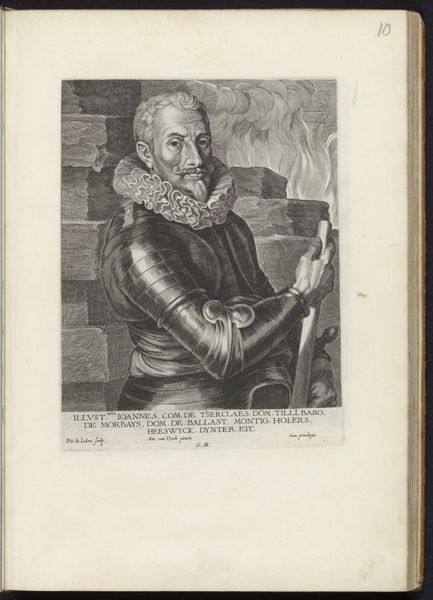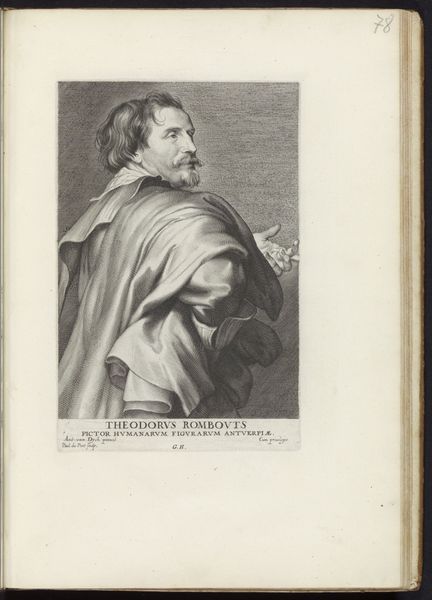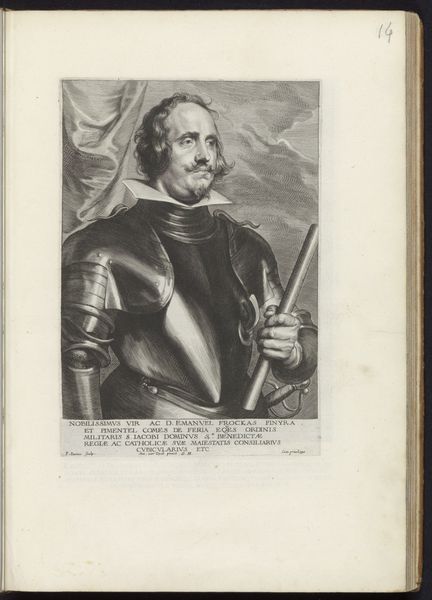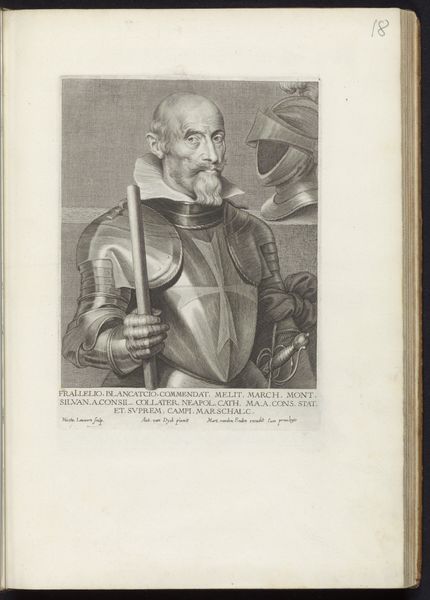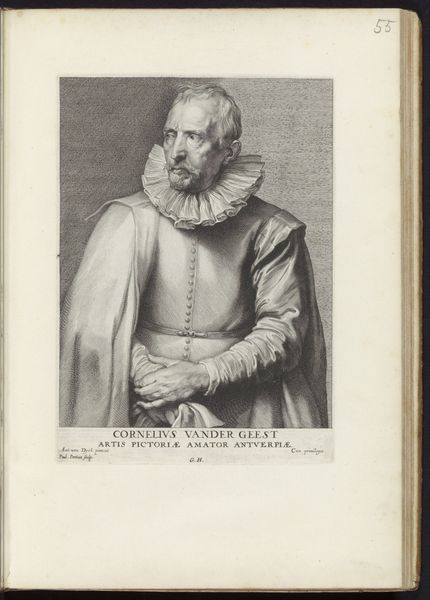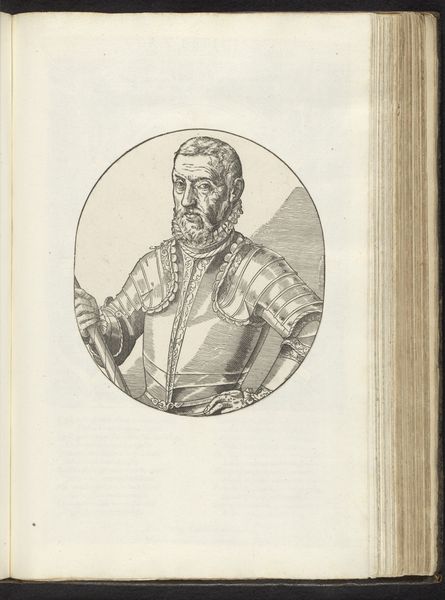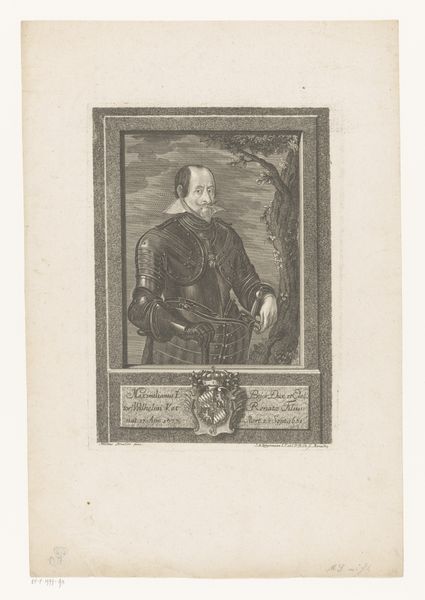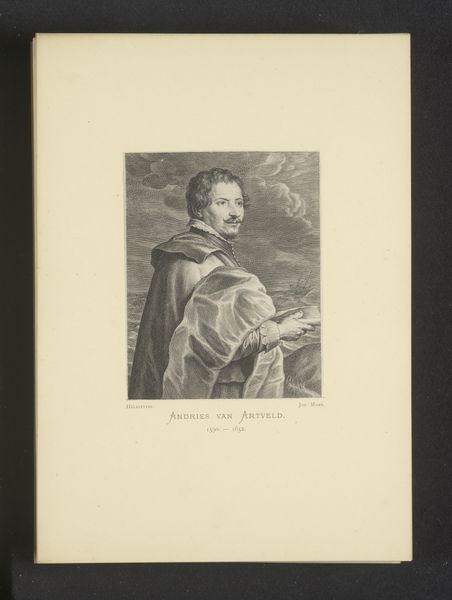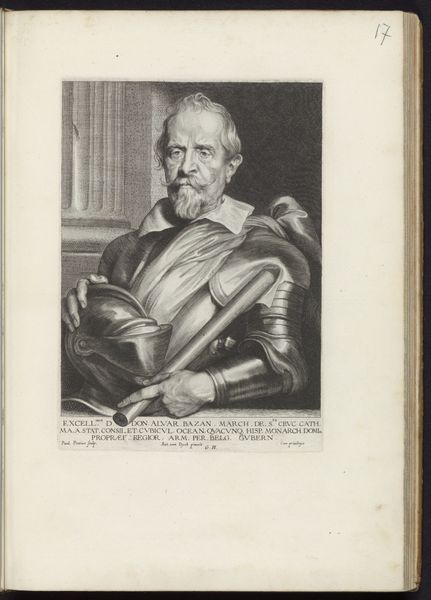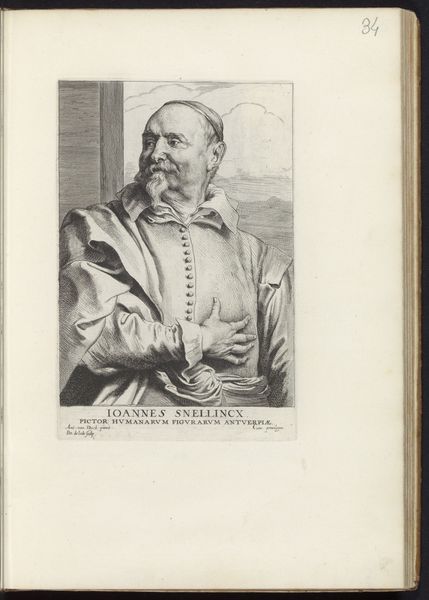
Portret van Albrecht von Wallenstein, graaf van Friedland Possibly 1630 - 1646
0:00
0:00
engraving
#
portrait
#
baroque
#
old engraving style
#
history-painting
#
engraving
Dimensions: height 240 mm, width 172 mm
Copyright: Rijks Museum: Open Domain
Curator: Well, this portrait has a story to tell! We're looking at an engraving called "Portret van Albrecht von Wallenstein, graaf van Friedland," likely created between 1630 and 1646 by Pieter de Jode I. It resides here at the Rijksmuseum. Editor: My goodness, what a stern face! And is that a mountain range in the background? Gives it such a… theatrical weightiness. I feel like I'm staring into the eyes of someone who has seen it all, and perhaps caused a fair bit of it, too. Curator: That’s perceptive. The mountains contribute to a feeling of imposing authority, certainly fitting for Albrecht von Wallenstein, who was a powerful military figure during the Thirty Years' War. And look at the meticulous detail rendered through engraving; it's incredible, isn't it? Every line contributes to the texture of his armor, the fabric of his sash, and the landscape behind him. Note the use of hatching and cross-hatching to generate a spectrum of light and shadow. Editor: Absolutely! I’m drawn to the way the light plays on the armor—almost too shiny. He feels rather isolated. Maybe those mountains echo the sheer, craggy loneliness of command? The tight grip on that staff makes me wonder if he finds strength in what he owns. Curator: Perhaps a reflection on ambition and power. The Baroque style emphasized drama, and Pieter de Jode I definitely captures that here, particularly in the figure’s presentation—armor glinting, eyes steady. Editor: You know, it makes me wonder about the artist’s perspective. Was this intended as a flattering portrayal, or something more nuanced? Did they like him? I’m imagining they needed to keep Wallenstein on their good side—what would he think of how his essence was shown on paper? Curator: Good questions! Certainly, the role of portraiture during this time was often to project status and influence. However, there could be an element of the artist's own interpretation. As you observed earlier, the theatrical composition here could lead us to think more broadly about the weight and performance of power. Editor: Makes me think of history caught in a tiny frame... and all those engraved lines hold lifetimes. The artist had to choose how best to lay it bare and perhaps say, I knew this person. Curator: It certainly makes history feel very immediate, and I'm left reflecting on the artistic choices that convey character through technique.
Comments
No comments
Be the first to comment and join the conversation on the ultimate creative platform.
